Tourism in the Corona Age: 10 Virtual Ways to Discover Koprivnica
June 25, 2020 - Tourism was on hold when we started this series of articles, but most of us still have plenty of time. So let's look at the virtual resources available to explore Croatia virtually. We continue our new Virtual Croatia series with the tools to discover Koprivnica, a continental beauty.
A few weeks ago I wrote that being a tourism blogger in the corona era was about as useful as being a cocktail barman in Saudi Arabia. I feel less useless now, a few weeks later, and I am encouraged by the number of Croatian tourism businesses who are contacting us wanting to start thinking of promoting post-corona tourism.
One of the challenges of writing about tourism at the moment is that there is nothing positive to write about. With people confined to their homes and tourism in Croatia currently not possible, many have decided to go into hibernation until it is all over.
I think that this is a mistake, and I have greatly enjoyed the TCN series by Zoran Pejovic of Paradox Hospitality on thinking ahead to tourism in a post-corona world. You can find Zoran's articles here.
Way back on March 14 - several lifetimes ago - I published an article called Tourism in the Corona Age: 10 Virtual Ways to Discover Zagreb. The way I saw things, now was an OUTSTANDING opportunity for tourism promotion. People have time, they yearn for their freedom and former lives, so give them the tools to thoroughly research and enjoy your destinations, and you will have then longing to be there. And when they do come, they will have a deeper understanding of the destination due to their research.
South Africa and Portugal were the first to do their post-corona tourism promotion videos several weeks ago (Post-Corona Tourism Planning: Lessons from South Africa and Portugal), a trick which has been followed by other tourism countries, the latest being Croatia with the national tourist board campaign, #CroatiaLongDistanceLove, going live yesterday.
But while these campaigns create longing and market presence, they don't really educate. People now have time to really get into destinations. And dreams of escape to somewhere more exotic are high on the list of priorities of many.
So TCN has decided to help with that education with a new series called Virtual Croatia, where we will be helping you discover many of Croatia's destinations with all the best virtual tools available on your self-isolating sofa at home.
We started with Tourism in the Corona Age: 10 Virtual Tools to Discover Hvar.
After this, we put our a press release (which you can read here in English and Croatian) offering a free article to any local tourist board in Croatia who would like the free promotion in our Virtual Croatia series.
The Sinj Tourist Board was the first to respond, and now you can see just how rich the tourism offer is in this proud Alka town - your virtual tools to Discover Sinj. This was followed by DIscover Opatija, Discover Brela, Discover Rogoznica, Discover Stari Grad, Discover Omis, Discover Lumbarda and Discover Jezera.
Ivona Šimunić from the Tourist Board Koprivnica provided us with some of the resources which will make you want to visit the beautiful town in the central Croatian Podravina region.
Lifestyle Capital of Central Croatia - Discover Koprivnica
Koprivnica is a town of exceptional beauty, great lifestyle, natural resources to be enjoyed close to the town, and vibrant art scene.
Official promotional video created by the town in 2019.
Nexus Produkcija invites you to visit Koprivnica with a beautiful video
A drone-shot video, showing what it looked like when the Tour of Croatia bicycle race came to Koprivnica.
Carlos Garcia set some of his music to the wonderful sights of Koprivnica.
The Rennaisance Festival in Koprivnica is often said to be the best-organizes tourist event in Croatia.
Šoderica Lake is a centre of outdoors activities for the people of Koprivnica.
Moonlight session of a local band performing a song about Koprivnica
If you're one of the trainspotting people, Koprivnica also seems like a place to go to.
Rafting along the Drava River near Koprivnica has recently became a tourist attraction.
Official Koprivnica Website
Find out more about Koprivnica on the tourist board website, and make sure you read the article which will explain to you why a stinging nettle leaf is attached to the mouse pointer while you're on the site (hint: in Croatian, the word for stinging nettle is kopriva).
Next time you decide to visit central Croatia, will Koprivnica be on your not-to-miss list?
To discover more of virtual Croatia, you can follow this series in our dedicated section, Virtual Croatia.
If you are a local tourist board in Croatia and would like your destination featured in this series for free, please contact us at This email address is being protected from spambots. You need JavaScript enabled to view it. Subject Virtual Croatia (and destination name)
Ivan Mlinar, a Young Bladesmith Mastering His Craft in Koprivnica
February 6, 2020 - While much of the younger generation prefers gadgets to traditional crafts, there are exceptions, such as Ivan Mlinar from Koprivnica.
A lot of young people have left Croatia to find the place when the grass is greener. But not all. Meet Ivan Mlinar, a young bladesmith who is fulfilling his dream and finding the grass green enough in Koprivnica.
When you realise that Ivan has been involved in reenactment since he was a child, it isn't surprising that he fell in love with swords and knives. As he grew, he was showing more significant interest in making them himself.
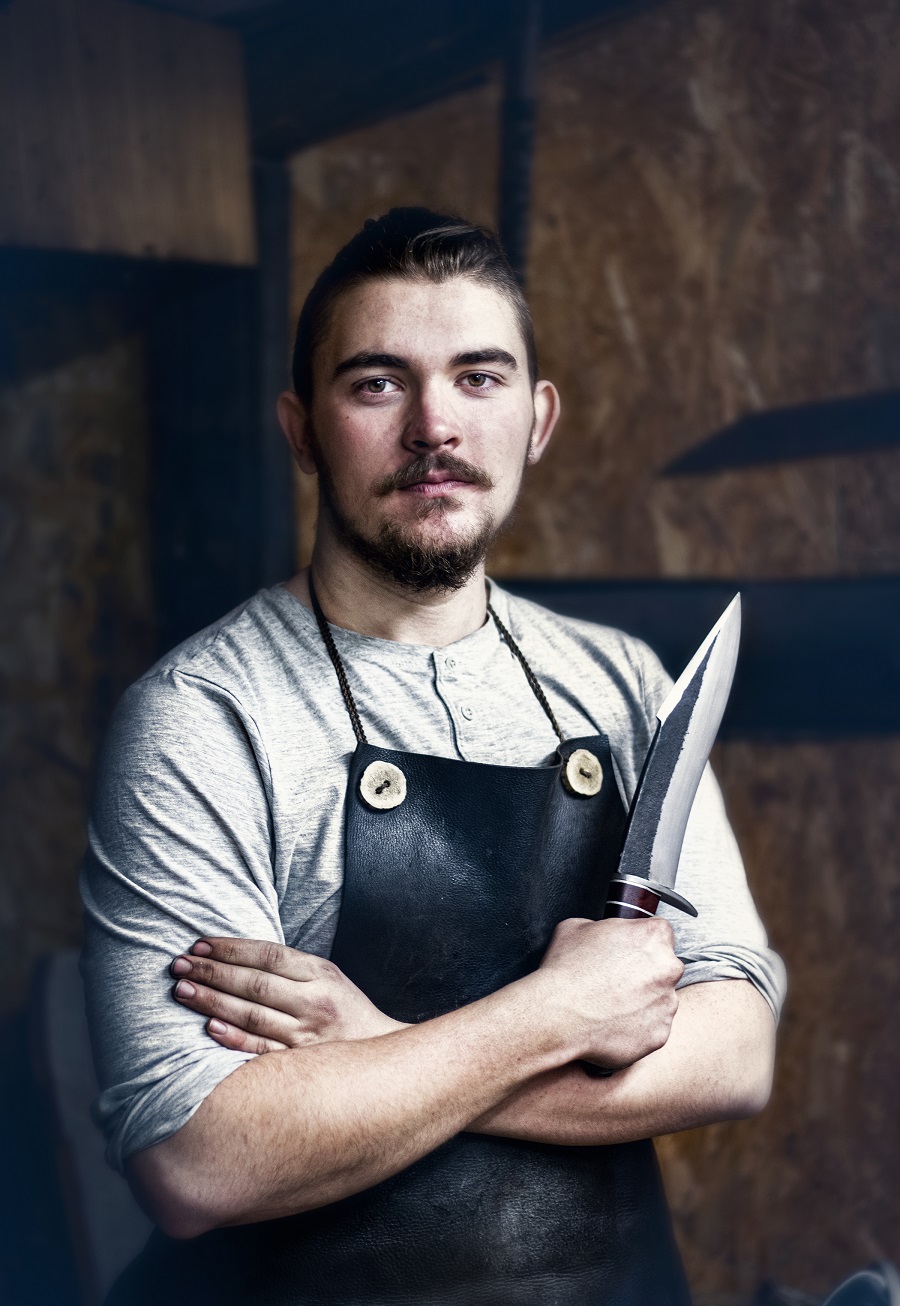
Apart from the influence of the reenactment scene, Ivan's unusual career decision also had its roots in his time at high school, and Ivan's interest in the show 'Forged in Fire'. After many episodes, he decided to try something by himself. He started his search for different types of steel, different kinds of material which he found in the local landfill, such as springs. But as he began gathering equipment, he needed to figure out how to shape this material without a proper forge. So he improvised. He took some planks, wooden beams, bricks, sand, and soil and made his forge. Besides this, he also made pliers which he is still using.
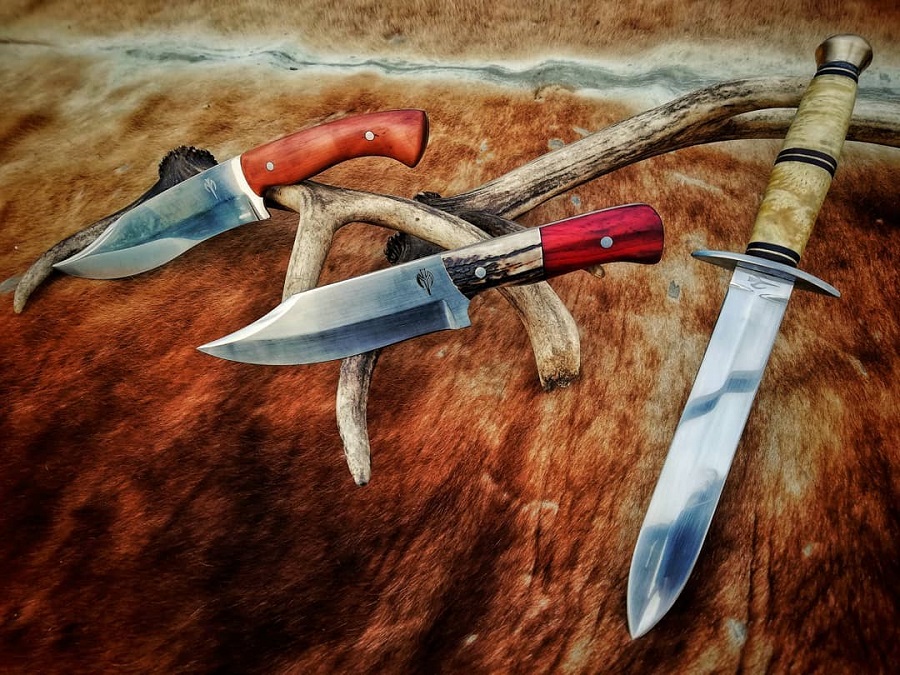
As time passed, he experimented with many types of steel to see how much he could get from a certain kind. Also, he figured out the scheme of the forging and also how to spend less material. That is how the first hardening knife was born. It was quite surprising how durable that knife was. Ivan was satisfied with it and decided to get more into this story. He got quality materials as well as a gas forge. As his friends were buying brand new mobile phones and Play Stations, he was investing all his money into the workshop.

In April 2019, things started to get serious. He dug more into research, made better knives as well as their functions and handles from various woods. At that time, he met a man from England who was interested in his work and wanted to buy something from him. According to Ivan, everything was dealt with within 15 minutes. The man was pleased, money sent, and Ivan more confident in what he was doing. Step by step, the circle of people who knew about Ivan started getting bigger and bigger.
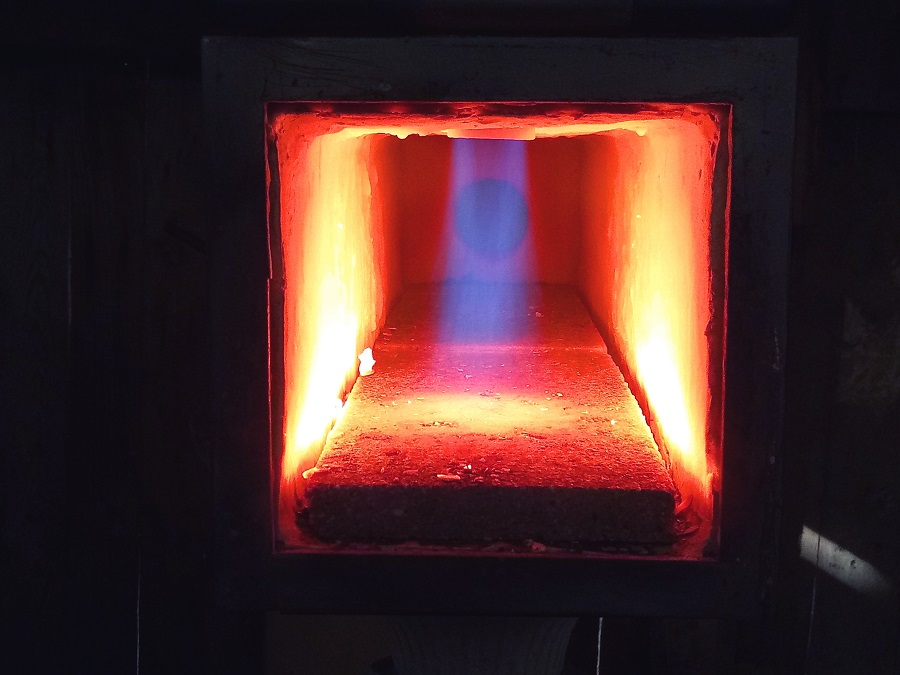
Ivan contacted one of the most famous and one of the best bladesmiths, Kyle Rover. Kyle is a Master Smith in the American Bladesmith Society and also a professional who enjoys sharing tips and tricks with beginners. As Ivan and Kyle were talking, Ivan figured out he needed to start from the beginning. "When you start doing something, you want to be the best immediately. Later you figure out you need to learn taking step by step." So he started again.
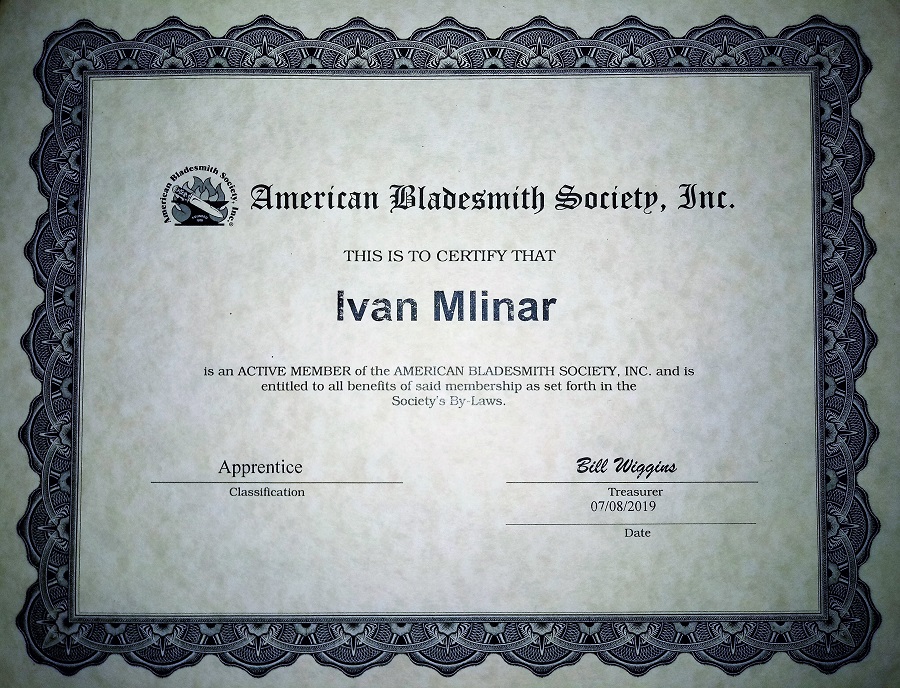
Ivan is now a member of the American Bladesmith Society. There are three levels you can achieve: Apprentice, Journeyman Smith, and Master Smith. To become an apprentice, you have to pass the exam. After three years, you can apply for the Journeyman Smith as in, you have to make a knife good enough to pass tests of durability at one of the Master Smith's workshop. This society holds on traditionally, so they only accept knives that are forged.
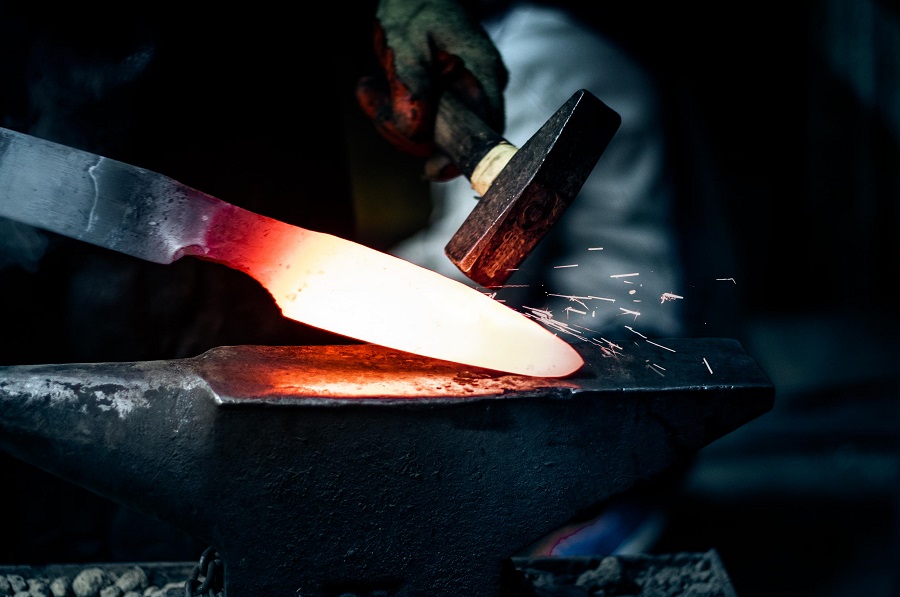
There are no Master Smith in Croatia, and the nearest one is in Germany. One of the conditions all members have to respect is they always have to help other people if they are asked for advice. Also, members have the privilege of having their products published on the web site of the ABS.
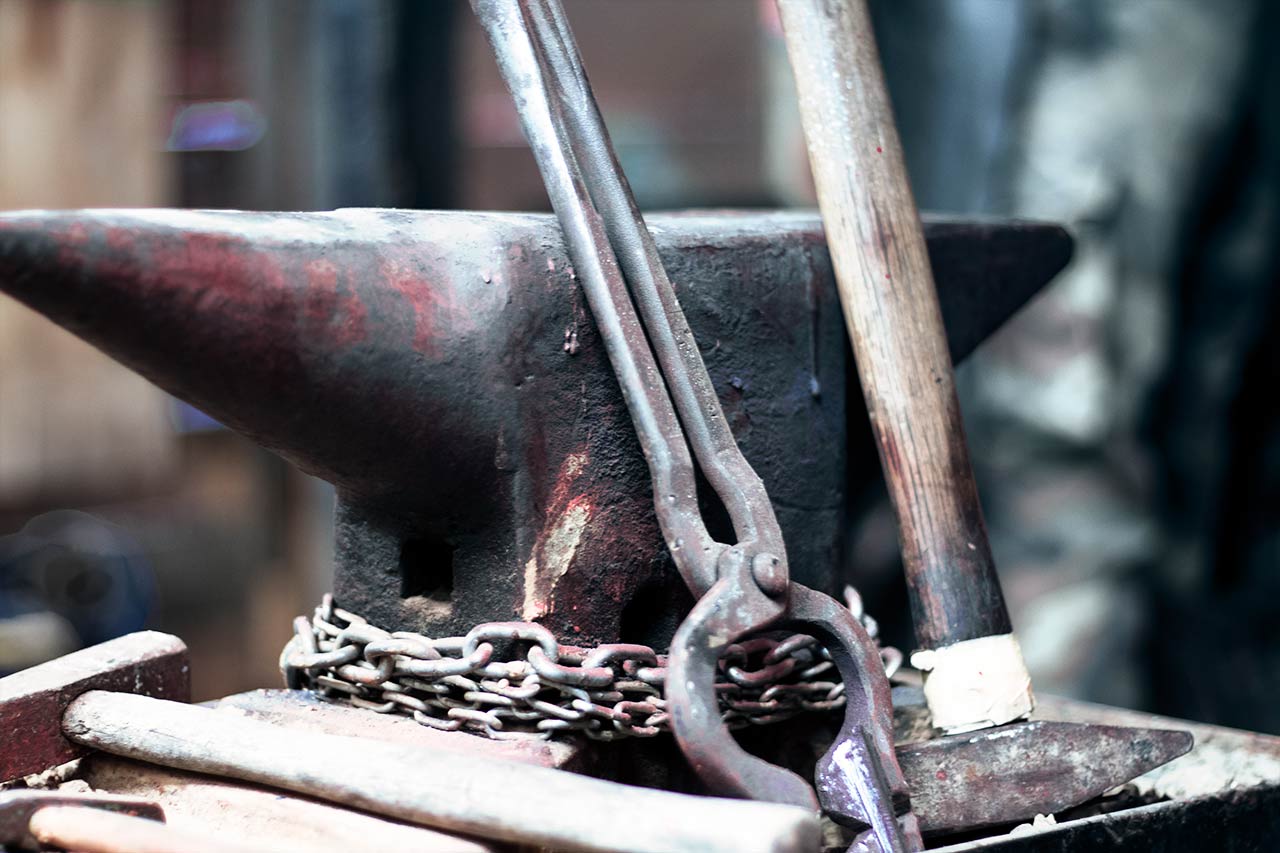
As his love for forging was growing, he wanted to turn his hobby into his job. At the age of 20, he opened a workshop under the name "IM Bladesmithig". The whole process started in November, but as bureaucracy in Croatia takes some time to do its job, the workshop officially opened its doors in December. I was curious about how that went.

"You really need to prepare your nerves for that. No matter when you come to the office, they are on a break, launch, or have zero interest in you. To be precise, they weren't quite sure what they needed to do, so they just sent me to another person. They don't want to reveal to you all the details you have to know, so you could fail, close your firm and return the money to them."
Strange, but not surprising.
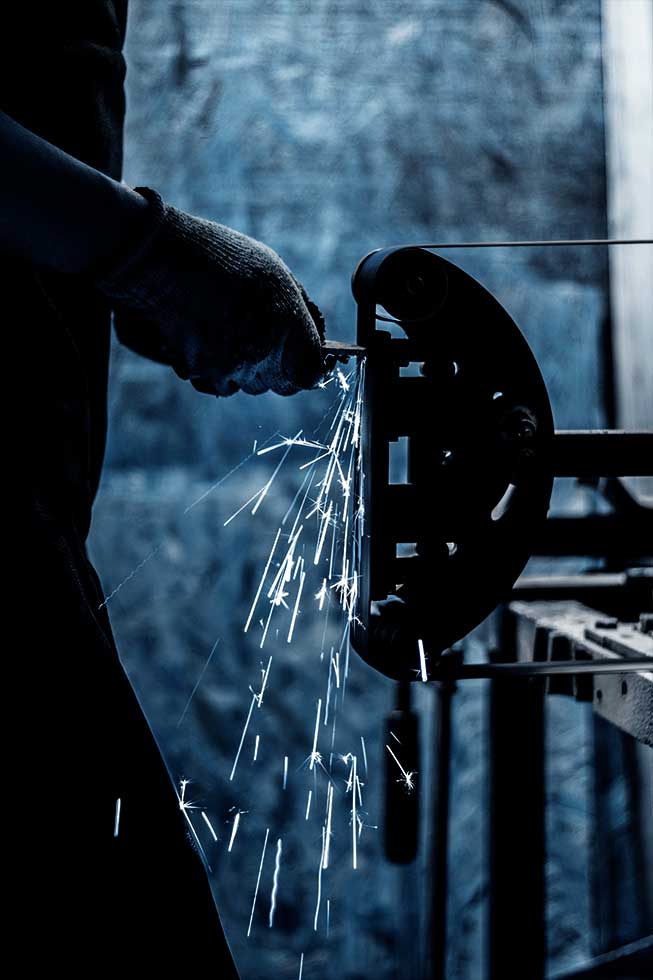
People in Croatia still aren't familiar with the quality of forged knives. "People like shiny knives, they care only about stainless steel. I always say you have to take care of the blade. But, people don't want to buy things which they have to take care of. They tend to buy cheap knives, but it always turns out that cheap things are the most expensive ones."
There are always those people who think they know more than the person who's the actual job that is. Ivan has no problem with explaining to people how things are, but still, not everyone believes it.
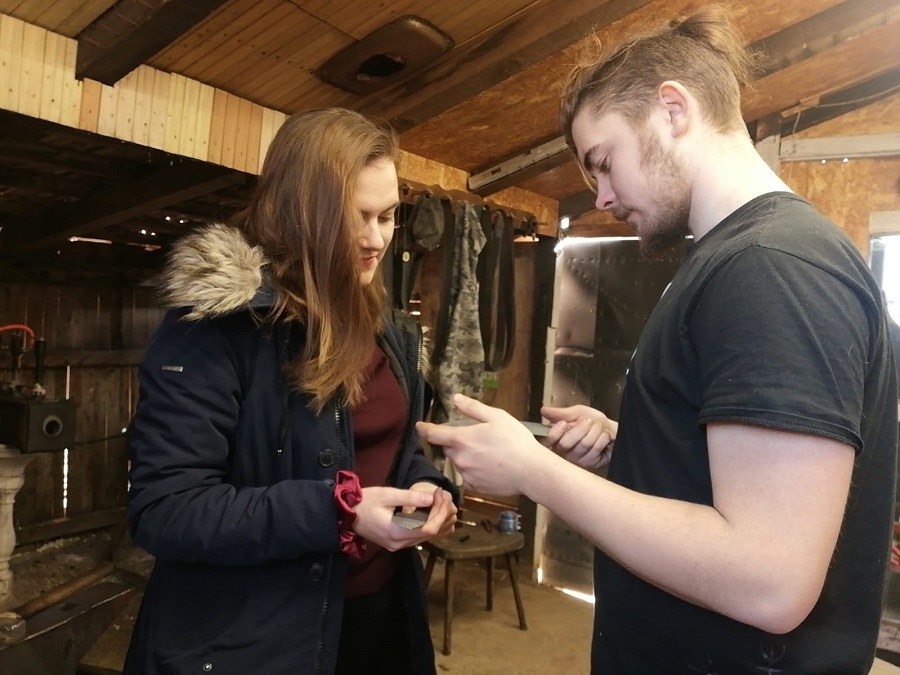
Depending on the difficulty, it takes him from a couple of days to a couple of weeks to get a knife done. He also made handles and cases for knives and all that knowledge he found by himself. There are not many people in Croatia whose job it is, so Ivan had to take care of it in his way.
As for further plans, he mentioned starting a YouTube chanal as well as a webpage where all of his products will be available. One interesting thing is that a lot of people asked him for some instructions. They are more than just keen to learn from him, so he is currently thinking about some courses. But now, several orders are awaiting him as well as his wish to make katana, sword, and wakizashi.
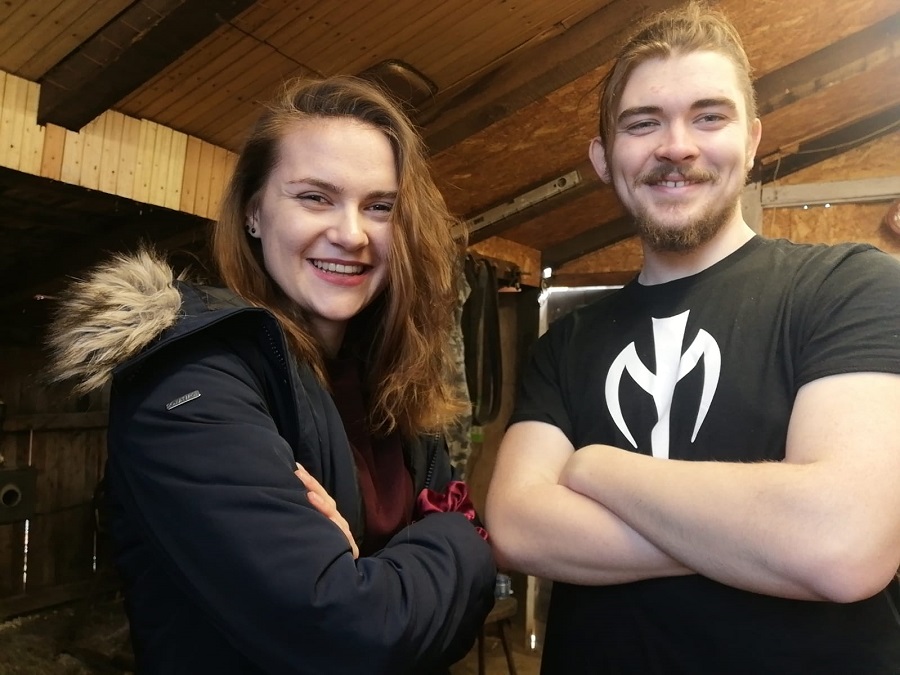
Make sure you support young people by following Ivan on his Facebook page and Instagram. In the end, maybe it's time for replacing your old kitchen knife with a brand new IM knife.
Koprivnica Wins Awards for Continental Tourism, Most Ecological Town
As Poslovni Dnevnik writes on the 7th of January, 2020, the continental Croatian town of Koprivnica will remember 2019 as an extremely successful year, not only by the numerous activities carried out by the local government and by local companies, but also by the many awards won.
As a continental town, Koprivnica has won two tourism awards, the award for the best continental tourist destination of the Vecernjak Tourist Patrol, while the town's popular Renaissance Festival won the Tourism Event of the Year from the Croatian National Tourist Board (HTZ), the Ministry of Tourism, and the Croatian Chamber of Commerce (HGK).
In spring, the first living public lighting laboratory was opened, not only was it the very first in all of the Republic of Croatia, but in this part of Europe, in which a dozen manufacturers of public lighting equipment and smart solutions test, present, and also use everyday.
This functional blend of smart solutions, public lighting, energy and everyday city life is the winner of Poslovni Dnevnik's award in the smart energy/environment category.
When it comes to environmental care, Koprivnica is also the recipient of the award for being the most environmentally friendly town, as the town that cares most about its environment and waste management system. At the end of last year, more than 50 percent of the collected municipal waste had already been properly sorted and separated at home and then through the recycling yard, and the construction of a second recycling yard worth over 5.2 million kuna is being co-financed by the EU Competitiveness and Cohesion operational programme in the amount of 85 percent.
A new entrepreneurial/business incubator for creative industries, worth 18 million kuna in total, has been built with European Union money, and it has already filled its premises with young and new entrepreneurs in just a few months.
The energy renovation of Koprivnica's Braća Radić elementary school in the amount of 10.6 million kuna has also been completed, and at the same time, the contract for the energy renovation of the Antun Nemčić Gostovinski elementary school has been signed.
The town's Tratinčica kindergarten (2.8 million kuna) was also renovated energetically. In addition to facilities providing elementary education, a brand new kindergarten will be built with European Union money in the suburban settlement of Starigrad worth 7 million kuna, and a newly constructed junction road (worth 7.8 million kuna) that connects Starigrad with the suburban settlement Reka will be opened. These projects prove that Koprivnica is justifiably included in the Top 10 Croatian cities when it comes to the withdrawal of money from EU funds.
2019 also marked the hundredth anniversary of the Domoljub Hall (Dvorane), the cultural and educational centre of Koprivnica, and its significant anniversary saw 1.1 million kuna invested in the renovation of the hall itself. For the fourth year in a row, the upward trend in job creation continues, and Koprivnica's budget has been a record in the last ten years, which is a direct indicator of positive economic activity. In addition to this are new entrepreneurial measures that have resulted in the signing of construction contracts in the Koprivnica entrepreneurial/business zones, contributing to more work and as such - more job opportunities.
This year, the project of the construction of a new elementary school in Podolice with a new hall as well as the halls at the Đuro Ester primary school begins, as does the reconstruction of the city centre - Zrinski square (trg), the construction of two new roundabouts to increase road traffic safety on important and large roads, municipal infrastructure and, of course, the Koprivnica Water Agglomeration project worth 512 million kuna, with which 23 kilometres of new water supply and sewerage network are in the works.
Make sure to follow our lifestyle page for much more.
2019 - Successful Business Year for Koprivnica, Croatia's Best Continental Tourism Destination
ZAGREB, January 5, 2020 - For the northern Croatian town of Koprivnica, 2019 was a very successful year, marked by numerous activities launched by the local authorities and businesses as well as by numerous awards, the Večernji List daily of Sunday reports.
A continental town, last year Koprivnica won two tourism awards - one by the Vecernji List daily, which named it the best continental destination, and one by the Croatian Tourism Board, the Tourism Ministry and the Croatian Chamber of Economy, which declared its Renaissance Festival, the best known local event, the Tourist Event of the Year.
In the spring 2019, the town authorities launched the first public lighting laboratory, not only in Croatia but in this part of Europe, with a dozen manufacturers of public lighting and smart solutions testing, launching and using their products in a well-known Koprivnica neighbourhood.
The project was awarded by the Poslovni Dnevnik business newspaper and Koprivnica also won the award as the most environmentally friendly town.
In late 2019, more than 50% of collected municipal waste was sorted already at its source and at a recycling centre, and the construction of a second waste recycling centre, worth HRK 5.4 million, (85% of which are EU funds) has been underway.
EU funds were also used to build a new business incubator for creative industries, worth HRK 18 million, and young and new entrepreneurs are already working there.
For the fourth year in a row job creation in the town has been on the rise, and the town budget has reached record-high amounts in the last ten years, which is a direct indicator of positive economic activity, says the daily.
More Koprivnica news can be found in the Lifestyle section.
Croatian Railways Building 400 Kilometers of High Speed Track
Croatian Railways is building 400 kilometers of high-speed track and trains on several key routes will be running at speeds of up to 160 km/h within 10 years. The average speed of a current Croatian train is only 58.2 km/h! Only Serbia, Bosnia and Montenegro have railway systems worse than ours.
However, December has proven to be the month of railways when it comes to major projects in this area of Croatian infrastructure, according to Krešimir Žabec/Jutarnji List on December 30, 2019. For years, there have been reports of billions of euros coming to Croatia to upgrade our catastrophic rail network.
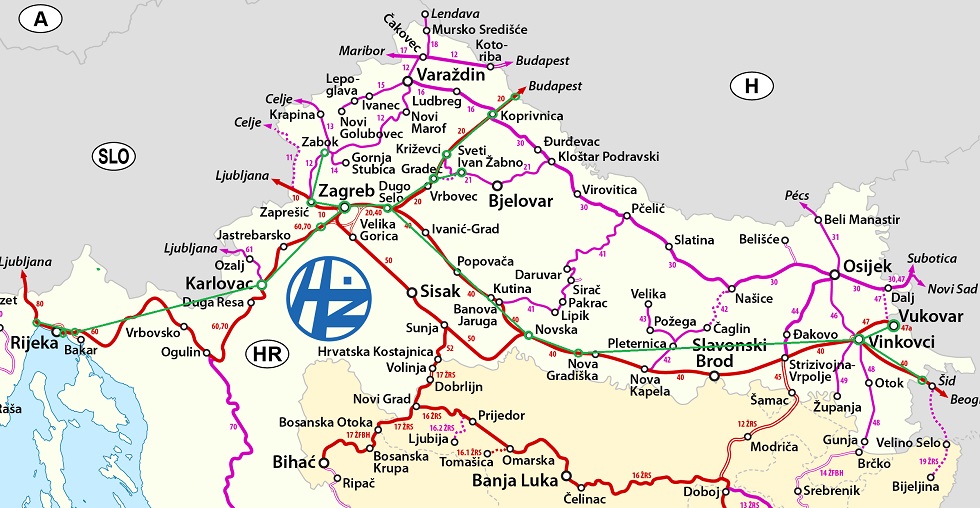
Map of Current and Upcoming Croatian Railways High-Speed Projects | Croatian Railways
Average Speed of Current Croatian Train: 58.2 km/h
The state of railway infrastructure in Croatia is perhaps best illustrated by the indicator of 58.2 kilometers per hour, which is the average speed of trains running in Croatia. Only Serbia, Bosnia and Montenegro have railway systems worse than ours. But until recently, promises of a brighter future for Croatian Railways have sounded like the dreams of politicians which never produced any visible results. However, a turnaround began to take hold this past month.
First New Railway Line in 50 Years Launched in December 2019
First, after 50 years, a new railway line was launched in Croatia: from Gradec to Sveti Ivan Žabno. Then, in Vukovar, a contract was signed with the Spanish company Comsa to upgrade and electrify the Vinkovci - Vukovar railway. Eight years after its launch; the Turkish company Cengiz was selected as contractor for the Križevci - Koprivnica - Hungarian Border section of the project. And a 321 million EUR contract was finally signed to build the Lowland Railway section of Hrvatski Leskovac to Karlovac, which is being co-financed by the European Union.
Three Billion EUR Investment in Croatian Railways
Croatia, the European Union and the World Bank are expected to invest more than 3 billion EUR in designing, renovating and upgrading Croatian railway infrastructure over the next ten years. There are 18 projects in different stages of progress, of which only the Gradec - Sv. Ivan Žabno line has been finished.
Overview of the 250-Kilometer Lowland Railway Project
The international Mediterranean railway corridor connects Rijeka with the Baltic. The Croatian part of this corridor is divided into a section from Zagreb to Rijeka, known as the Lowland Railway, and the section from Zagreb to Botovo (the Hungarian border). It is a 250-kilometer railway line, and only 22 kilometers, from Zagreb to Dugo Selo, are currently two-lane and have been electrified. The estimated value of the modernization and construction of this route is approximately 2.6 billion EUR, and that tab does not include the cost of modernizing the Zagreb hub.
The other sections of this route are in different stages of completion. Work on the 38.2-kilometer Dugo Selo – Križevci section is underway and running about two years behind schedule.
The contract for co-financing and a tender for a contractor have been signed for the section from Hrvatski Leskovac to Karlovac.
Two Options for Most Expensive Lowland Span: Karlovac - Škrljevo
The Hrvatski Leskovac – Karlovac section is connected to the most difficult and expensive span, running from Karlovac to Škrljevo, which is about 150 kilometers long. Construction costs could reach 1.5 billion EUR, but he total cost of will depend on whether the Northern or Southern option is selected. Kupska, the Northern option, is 150 kilometers long, of which 61 kilometers involve tunnels and bridges. Drežnička, the Southern option, is 170 kilometers long with 45 kilometers of tunnels and bridges.
It is unknown at this time whether this section will be put into concession or the European Commission will decide to co-finance the project, due to concern over utilizing Chinese capital. EU funding for Croatia is a more favorable option as it won’t impact public debt. In the event of a concession, a Chinese company would build and finance the project, backed by state guarantees of around 1.5 billion EUR. And it would be difficult for the Croatian state to allow that.
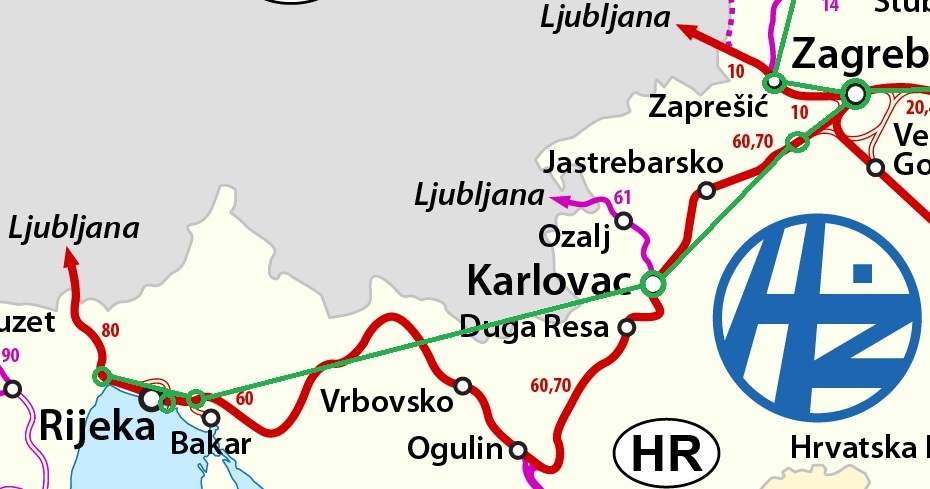
Close-Up of the Zagreb - Hrvatski Leskovac - Karlovac - Škrljevo - Rijeka - Jurdani Line | Croatian Railways
Location Permit and Plans for Škrljevo - Rijeka - Jurdani Section
A location permit has been obtained for the Škrljevo - Rijeka - Jurdani section and the main plans are being drawn, and are being co-financed by the EU with 8.5 million EUR. A final solution is currently being worked on for the Zagreb hub. According to projections, the entire Lowland Railway could be completed by 2030.
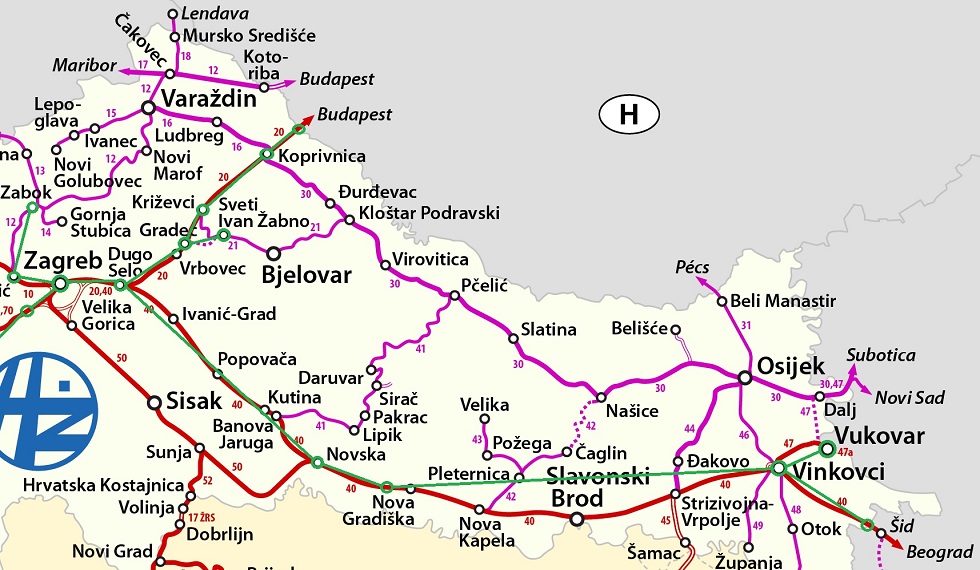
Close-Up of Railway Line Upgrades to Hungary and Serbia | Croatian Railways
Work Progressing on the Zagreb - Serbian Border Railway
Another important international route is railway from Zagreb to the border of Serbia. The sections of Vinkovci – Tovarnik – Serbian Border and Okučani – Novska have been modernized and plans reconstruction and upgrade of the Dugo Selo – Novska section are underway. The estimated price tag for work on this section is 580 million EUR. Project plans for the modernization of the Okučani - Vinkovci section are also in development.
In addition to the construction of the Dugo Selo - Križevci section, two more projects are underway. As part of the modernization and electrification of the Zaprešić - Čakovec railway, work is progressing on the Zaprešić - Zabok section.
Zagreb and Rijeka Port Hubs Undergoing Upgrades
The railway network within the greater Zagreb metropolitan area plays a crucial role in passenger transport. The value of this project, which is being carried out by the Swietelsky construction firm, is estimated at 529 million EUR, with a planned completion date of 2021.
Another important project is the reconstruction and capacity expansion of the Rijeka Brajdica freight railway station.
This project includes the complete reconstruction of the existing nine tracks and the extension of the Sušak railway tunnel to a length of 423 meters. The total value of this project is 35.6 million EUR. This project is extremely important for expanding the capacity of the Port of Rijeka.
Along with these and a few other projects in the upcoming ten years, Croatia is expected to finally upgrade its railway infrastructure. As mentioned in an earlier TCN article, these upgrades will allow train passengers to travel at speeds of 160 kilometers per hour.
Croatian Railways Project Overviews:
Here is an overview of six key railway projects; their statuses and expected dates of completion:
Dugo Selo - Križevci:
Length: 38.2 kilometers
Details: Upgrade of the existing track and construction of the second track.
Contractors: Zagreb Montaža, DIV, Dalekovod Integral
Completed: 65 percent of the financial part of the contract.
Deadline: 48 months
Cost: 196.9 million EUR
Križevci - Koprivnica - Hungarian Border:
Length: 42.6 kilometers
Details: Upgrade of the existing track and construction of the second track.
Contractors: Cengiz (Turkey)
Completed: Signing of construction contract in Spring 2020.
Deadline: 48 months
Cost: 400 million EUR
Vinkovci - Vukovar:
Length: 18.7 kilometers
Details: Track upgrade and electrification.
Contractors: Comsa
Completed: Signed construction contract.
Deadline: 24 months
Cost: 55 million EUR
Hrvatski Leskovac - Karlovac:
Length: 44 kilometers
Details: Upgrade of the existing track and construction of a second track.
Contractors: Tender in process.
Completed: EU approved co-financing with 361 million EUR.
Deadline: TBD
Cost: 450 million EUR
Zaprešić - Zabok:
Length: 23.9 kilometers
Details: Railway modernization and electrification.
Contractors: Swietelsky
Completed: In progress.
Deadline: End of 2021.
Cost: 80.8 million EUR
Rijeka Brajdica:
Length: 4 kilometers
Details: Connecting track to the container terminal of Adriatic port.
Contractors: Kolektor and Euro Asphalt
Completed: In progress.
Deadline: 45 months
Cost: 29.5 million EUR
Follow our Travel page for our continuting coverage of high-speed train track upgrades in Croatia. Train schedules, tickets, route maps and news can be accessed on the Croatian Railways site here.
Varazdin, Medjimurje, Koprivnica-Krizevci Counties to Introduce Integrated Passenger Transport
October 2, 2019 - Medjimurje, Varazdin, and Koprivnica-Krizevci Counties will be the leaders of integrated passenger transport in Croatia.
HRTurizam reports that in cooperation with the Varazdin, Medjimurje and Koprivnica-Krizevci counties and Croatian Railroads (HZ), and as part of the "Integrated Passenger Transport (IPP)" project by the Railway Association, an agreement was signed at the beginning of the year for the "Integrated Passenger Transport Master Plan".
With this agreement, HZ Passenger Transport and the three northern counties begin active cooperation in the implementation of measures that will, in the long run, result in establishing integrated passenger transport throughout the three counties. This means that in a few years, we will have a public transport system where the passenger will be able to easily combine train and bus lines with a single transport ticket and arrive at almost any location in the three counties throughout the day.
It is important to note that Integrated Passenger Transport is applied by all developed regions of Europe and the world. Experts are unique in assessing that such a system provides quality access to the entire urban, suburban and rural areas in a region, and it significantly improves the quality of life and competitiveness of the economy, since workers can easily and conveniently reach their jobs and meet many other needs without using a car. This means that there is less traffic congestion, that no parking is required, the environment is less polluted and the transport system as a whole is safer.
"For the past five years, we have seen a 10 percent drop in public transport, while the European Union has grown steadily. A small number of lines, inefficient systems, and obsolete rolling stock are a major problem for the rail and bus systems, and a transformation of the entire system is needed that will only come to life if we start thinking about traffic and the way these three counties think. We are entering a period where more than ever will be invested in railway infrastructure and the development of railway transport, and I am glad that it is precisely Medjimurje, Varazdin and Koprivnica-Krizevci County that will be the first and the leaders of integrated transport in Croatia for the benefit of our citizens and economy,” stated Nikolina Brnjac, State Secretary for Transport at the Ministry of the Sea, Transport and Infrastructure.
"In the area of Medjimurje County, we carry about 2 million passengers a year, and because of these passengers it is important to improve the functionality of transport and contribute to their mobility," concluded the President of the Board of HZ Passenger Transport, Zeljko Ukic.
The total value of the project is 5.2 million kuna - each of the counties has set aside around 260,000 kuna, and EU funds cover the rest. The project also plans to build and modernize a new high-efficiency line between Cakovec-Varazdin-Lepoglava-Zabok, and a feasibility study is underway, with plans to complete the works by September 2020, said Varazdin County prefect Radimir Cacic.
Also, a study on a new network of bus lines for these three counties is being prepared, and the plan is to establish a so-called "pilot line" consisting of trains and buses and introduce a single map for both modes of transport. The pilot line, for which only one ticket will be sufficient, should cross the route Varazdin - Lepoglava - Bednja - Trakoscan, with a changeover in Lepoglava, and Varazdin - Ludbreg - Mali Bukovec, with a changeover in Ludbreg.
"In three counties, the train and bus routes will be harmonized, there will be about 20 departures in the main routes from morning to late at night, all of which can be used by purchasing a single transport ticket," said Cacic.
To read more about travel in Croatia, follow TCN's dedicated page.
Protest Against Waste Management Centre Held in Koprivnica
ZAGREB, May 12, 2019 - About 100 people rallied in the northern town of Koprivnica on Saturday to protest against the planned construction of a regional waste management centre at Piškornica.
Ivan Jakupić, the head of the Green Piškornica Association which organised the rally, told reporters that the project posed a threat to a nearby water pumping site which is vital for the entire Koprivnica-Križevci County.
"The present practice of disposing waste from the whole of north-western Croatia at the Piškornica landfill, which is located only seven kilometres from the centre of Koprivnica, is unacceptable," Jakupić said.
He said that the project could not be justified because on entering the European Union Croatia undertook to sort considerable quantities of waste "on the doorstep". Such a sustainable waste management policy makes the construction of regional centres unnecessary, he added.
"We need a landfill for inert waste, that is waste that cannot be sorted. Such a landfill must not be located in the low-lying part of our county but in its hilly area," Jakupić said, claiming that Croatia had so far used little EU money for implementing a sustainable waste management policy.
"It's not clear to us what criteria the government followed to declare the Piškornica project a strategic project," he said, adding that bringing waste from other counties to theirs "cannot and must not be a strategic project."
More news about waste management practices can be found in the Politics section.
Digital Croatia: Best Large ''Digital'' Cities Zagreb and Rijeka
Just how close are we to a real digital Croatia? The answer is unclear and as varied as ever, but some Croatian cities have shown promise with some rather impressive and encouraging results.
As Novac/Gradonacelnik.hr writes on the 23rd of April, 2019, although more and more cities are gradually digitising their business and investing in smart city solutions, and some of the most advanced have almost completely switched to doing solely digital business, generally speaking, Croatian cities are only in the very early stages of the much needed digital transition, just as Croatia is, as a country, at the very bottom in Europe in terms of the digital readiness of general society and the economy.
As the methodology for ranking cities in terms of digital readiness is only at its very beginning even at the European level, stories and analysis of the "smart city" concept development here in Croatia are still very much based on individual experiences, examples and projects.
That is why, in order to gain a real elementary insight into the digitalisation of Croatia's services and the communication of the country's many city administrations with citizens, experts from Apsolon, a consulting company specialising in digital business development, has undertaken the very first major study of the ''digital readiness'' of twenty of the largest cities across Croatia. This study, according to project manager and smart management director at Apsolon, Ivana Novoselec, is the basis for the further development of research tools and methodology that will track the development and progress of Croatia's cities on an annual basis.
In its study, Apsolon divided the cities into three categories - large (Zagreb, Split, Rijeka, Osijek), middle (Zadar, Velika Gorica, Slavonski Brod, Pula and Karlovac) and smaller cities (Sisak, Varaždin, Šibenik, Dubrovnik, Bjelovar, Kaštela, Samobor, Vinkovci, Koprivnica, Đakovo, Vukovar.)
The digital readiness index at Apsolon was set based on several criteria - the availability of e-services (the number of administrative services and their digitalisation rate in Croatia), the availability of site service information and the development of unified services for making payments in the city, then came the availability of city data, the level of citizen participation in decision making and communication channels between the city administration and citizens, ie, the availability of data and time in which citizens receive answers to their various questions. At this stage, Apsolon hasn't entered into the internal processes in Croatia's city administrations, but rather focused on what services are offered to the city's citizens and how long such things typically take.
After this type of indexing and ranking, the title of the ''digitisation champion'' among the Croatian cities was awarded to the City of Rijeka, thus confirming its status as the best city in the Smart City category which it won last year. Apsolon pointed out that the City of Rijeka has achieved the greatest advances in the systematic raising of the quality of its services, but also the opening of data and communication channels to citizens.
"Rijeka as the most advanced city in Croatia in terms of digitisation and is characterised in particular by the emphasis on openness and communication with its citizens. Its administration is oriented towards clear communication (a very clear centralised e-services approach with well-organised access to all automated services and available forms), openness and participatory management," said project manager Ivana Novoselac.
In many categories, especially those relating to the functional aspects of digitisation (advanced digital services, e-citizen connectivity, etc.), Rijeka is followed closely by the City of Zagreb.
The city of Pula is the most advanced middle-size city in Croatia, which also presents its services and available information to its citizens in a systematic and very detailed way, raising standards in terms of transparency and interaction with citizens, and is certainly a champion among cities with between 50.000 and 100.000 inhabitants.
In relation to the criteria relating to specific functional and technological solutions, Karlovac, Velika Gorica and Zadar follow. For the City of Karlovac the large number of available administrative procedures on its website and responses to citizens' inquiries are generally quick made it stand out from the crowd.
Among the small cities in Croatia, there is no distinctly dominant digital champion, but according to research findings in different aspects of digitisation, Dubrovnik, Samobor, Sisak, Koprivnica and Varaždin appear to be the most successful ones, according to this research. Among the prominent representatives of this category, Dubrovnik is strategically trying to profile as Smart City and has a high quality City Card, e-Visitor platform, is very active on social networks and it continuing to develop innovative application solutions. When it comes to the number of digitally available services, Koprivnica ranks above all.
Samobor, which is particularly active on social networks and is the category winner for social networking, has a very comprehensive and interactive website which separates the site accordingly and has adjusted all of the information for citizens and for visitors, as well as separating foreign visitors from domestic ones.
It should also be noted that Bjelovar is extremely proactive in the field of the digitalisation of its administration, it is working on applicative transparency solutions as well as on internal digitalisation processes. What is particularly commendable is Bjelovar's focus on the digitalisation of its internal processes.
Make sure to follow our dedciated lifestyle page for much more.
Click here for the original article by Novac/Jutarnji/Gradonacelnik.hr
Croatian Startup and Entrepreneurship Discussion in Koprivnica
''The most important thing is to have a clear plan and a vision and to be persistent and never give up, because every good idea will find its way to a buyer,'' this was the message sent out to those thinking of becoming Croatian entrepreneurs.
As Ivan Tominac/Poslovni Dnevnik writes on the 18th of April, 2019, an event organised by Vecernji list and Poslovni dnevnik has the ultimate goal of which is the retention of young educated people in Croatia, and after Osijek, the event will move to Koprivnica, two continental Croatian regions which are often overlooked.
The event will include a tender for student development projects, round tables and forums entitled ''Future in Croatia'' which will be held across six Croatian cities in cooperation with six universities and a traveling exhibition to mark the the occasion of the 60th anniversary of Večernji list. In Koprivnica, the event will be held in cooperation with the North University on Tuesday at 10:00. Croatia's Minister of Tourism Gari Cappelli will give his view of Croatia and available opportunities, and before that, the event will be bringing two stories from Koprivnica that prove that you definitely can succeed in Croatia.
Boris Poljak, the owner of the Pobis company, noted at the very beginning of the conversation that entrepreneurship is not easy but challenging as the market does indeed offer countless possibilities, but whether or not we're successful is down to nobody and nothing but us.
"Being an entrepreneur depends on the person, and not on the place he's in. If one has the will and the desire to be an entrepreneur, then he won't care whether he's doing it in Croatia, Austria, Germany, or elsewhere," Boris Poljak said. For success, it's important to abide by the established plan and rules of the game, ie, certain legal frameworks.
According to him, young people aren't going straight into business today, but instead, they're moving into ''entrepreneurial waters'' because they want to ensure a secure existence for themselves. "The statistics on the opening and the closing of companies is proof of this. Unfortunately, many people don't succeed, but there are many who do succeed and who achieve excellent results here, and more and more are doing so internationally. Running your own business today doesn't require that much capital," Poljak stated with a short and clear message that says that without a clear plan and vision there can be no success.
"You have to work really hard with young people, they're most often not prepared for work and have a lot of prejudices towards employers," emphasised Poljak, adding that in his company he recognised that with the effort and investment poured into young people, he was creating quality staff who could compete on the world market level. Young people are increasingly involved in entrepreneurial ventures, and as a result, there are numerous startups popping up all the time across Croatia, leading to more tenders and investments.
Codebox managed to stumble upon such a welcome fat, the core activity of this organisation is the creation of personalised software, web design, computer equipment maintenance, and processing and data transfer. Martin Kolarić and Filip Stojić began on this path through a startup tender, and today they can safely say that it was a great opportunity to gain new experiences, try out their knowledge and skills and also have some fun.
"For all those who want to be successful, our advice is to work on themselves and their knowledge. A great deal of information is available to all of us and we have the opportunity of continuous learning and training. Innovation and creativity are the most important competencies today, which is why we need to work on our own improvement, this is the only path to real success,'' concluded Martin Kolarić.
Make sure to follow our dedicated business page for much more.
Click here for the original article by Ivan Tominac for Poslovni Dnevnik
Croatia's Hangar18 Opens First Store in Dublin, Ireland
As Bernard Ivezic/Poslovni Dnevnik writes on the 16th of April, 2019, in the very first NOA store in Dublin, Ireland, this company from Koprivnica, Croatia, sells mobile phones, televisions and mobile phone accessories all under their own brand.
Croatia's successful Hangar18 company from Koprivnica, which has developed its very own brand of mobile phones, NOA, which has a market share in the domestic field immediately behind giants like Samsung and Apple, has opened its first own NOA store.
The first brand store the company has opened is in the Irish city of Dublin, and this Croatian technology company has stated that it plans a further fifteen such stores in Ireland alone. Additionally, over the next three years, Hangar18 plans to open a total of one hundred of its own NOA stores across Western Europe.
Mario Pintar, Marketing Manager at Hangar18, says this enviably successful Croatian company has changed their approach to developing its sales network. In Eastern markets, with the exception of Croatia, and where they have been operating so far, the company does business via distributors, while in the west, he wants to be in direct contact with the company's customers.
"Customers in Eastern Europe buy mobile phones of up to 150 euros, while in the west, due to the better purchasing power, they're buying more expensive devices, and we see a greater room for growth," explained Pintar. He added that the company's expansion initially started a year ago, and intensive work has been going on on for the past six months.
He didn't want to comment on just how much the company invested, nor did he want offer any comment on much they plan to invest in further expansion. According to data from Business Croatia, Hangar18 saw growth from 242 to 137 million kuna from 2013 to 2017, its exports jumped to an impressive 66.7 million kuna, and its net profit rose from 1.3 to 4.8 million kuna. Mario Pintar says that they already have a warehouse over in Ireland and that they're hiring the first workers for it. He says that on average, the company will require three to four employees per store, and potentially even more for sales and management.
"Our colleague Tihana Magdić has been living in Dublin for a long time, so that's why we started with Ireland. She was promoted to country manager, she's well acquainted with the market, and the shopping centre we first entered was a great partner and it was very easy to arrange everything with them,'' Pintar said.
Pintar explained that in the west, Croatia's Hangar18 will compete in the B category of brands, but as the first choice of those who instead of A brands want the Best Buy mobile.
"What sets us apart is the fact that we give customers the functionality of A brand at a fair price, and then the Noa Premium Care warranty covers the first twelve months for damages such as screen breakages and water damage, and our ''after sales support,'' and we open our authorised NOA service in every country we enter,'' explained Pintar.
He added that after Ireland, Croatia's Hangar18 plans to open stores in other European countries, including the United Kingdom, Germany, France and Spain. However, he noted the fact that they hadn't forgotten about the eastern markets. For example, in Croatia alone, there are fifteen retail outlets where they sell various brands of ICT equipment. "Recently, we've been able to directly export to Russia as a third company from Croatia, which opens opportunities for us in both Azerbaijan and Kazakhstan,'' concluded Hangar18's Pintar.
Make sure to follow our dedicated Made in Croatia and business pages for more on business in Croatia, investment in Croatia, products and services from Croatia and much more.
Click here for the original article by Bernard Ivezic for Poslovni Dnevnik


